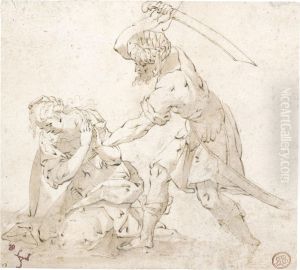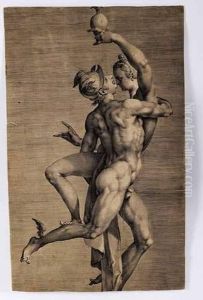Adrien De Vries Paintings
Adriaen de Vries was a preeminent Dutch sculptor of the late Renaissance period, known for his dynamic bronze sculptures, intricate details, and innovative casting techniques. Born in The Hague in 1556, de Vries was initially trained in the Netherlands but spent much of his career in the service of the Holy Roman Empire, particularly at the court of Emperor Rudolf II in Prague. His work represents a synthesis of Mannerist influences, combining the northern European attention to surface detail with the Italianate ideal of dynamic movement and emotional expression.
De Vries's sculptures often depicted mythological or allegorical scenes, characterized by their vitality and the complexity of their poses. He was particularly adept at capturing the textures of skin, cloth, and other materials, lending his figures a remarkable sense of realism. Among his most famous works are the 'Mercury Abducting Psyche', the 'Farnese Hercules', and the series of bronze fountains he created for the gardens of the Rudolfine Prague Castle.
Despite his success and influence in the late 16th and early 17th centuries, Adriaen de Vries's work fell into relative obscurity after his death in 1626. It was not until the late 19th and early 20th centuries that his contributions to European art were rediscovered and celebrated. Today, de Vries is regarded as one of the masters of Baroque sculpture, and his works are held in high esteem in museums and collections around the world. His legacy is seen in his influence on subsequent generations of sculptors and in his contribution to the development of bronze casting techniques.

